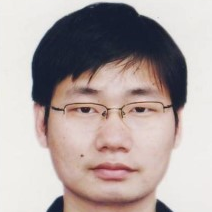Advances in Computer-Aided Manufacturing (CAM)
A special issue of Applied Sciences (ISSN 2076-3417). This special issue belongs to the section "Additive Manufacturing Technologies".
Deadline for manuscript submissions: 20 July 2024 | Viewed by 3927
Special Issue Editors
Interests: CAD/CAM; CNC machining; industrial big data; computational geometry
Interests: symbolic computation; mathematics mechanization; constructive differential and difference algebra; computer aided design and manufacturing; mathematical methods in CNC machining
Interests: intelligent adaptive machining technologies; machining dynamics of low-stiffness parts; robotic machining
Interests: grinding; polishing; surface integrity; bionic manufacturing; functional surface; micro/nano manufacturing; grinding process and mechanism
Special Issues, Collections and Topics in MDPI journals
Special Issue Information
Dear Colleagues,
Computer-aided manufacturing (CAM) provides efficient and automatable computer and machinery technologies to facilitate manufacturing procedures with high degrees of accuracy and precision. The emergence of modern digital, computer, and manufactory innovations (such as artificial intelligence (AI), virtual manufacturing, 3D printing, intelligent robots, ultra-precision machining, etc.) has posed new challenges in the advancement of computer-aided manufacturing, as well as regarding algorithms and software solutions. Therefore, this Special Issue intends to present new ideas, advanced manufacturing technologies, and high-quality experimental results in the field of CAM from models, algorithms, integrated systems, and practical use theory and applications. Areas and topics relevant to computer-aided manufacturing include, but are not strictly limited to, the following fields:
- Tooling and tool paths in high-speed machining and robotics;
- Streamlining of tool paths;
- CAM for multi-function and five-axis machining;
- CNC feature recognition and machining;
- The automation of machining processes;
- Production and engineering design;
- Equipment safety;
- Manufacturing planning, optimization, and simulation;
- Ease of use;
- Human–machine interaction;
- The application of artificial intelligence (AI) in CAM;
- Smart CAM software and evaluation;
- Computer-integrated manufacturing;
- Sustainable and green manufacturing;
- Relevant case studies.
Dr. Xin Jiang
Dr. Chun-Ming Yuan
Dr. Jinbo Niu
Dr. Guijian Xiao
Guest Editors
Manuscript Submission Information
Manuscripts should be submitted online at www.mdpi.com by registering and logging in to this website. Once you are registered, click here to go to the submission form. Manuscripts can be submitted until the deadline. All submissions that pass pre-check are peer-reviewed. Accepted papers will be published continuously in the journal (as soon as accepted) and will be listed together on the special issue website. Research articles, review articles as well as short communications are invited. For planned papers, a title and short abstract (about 100 words) can be sent to the Editorial Office for announcement on this website.
Submitted manuscripts should not have been published previously, nor be under consideration for publication elsewhere (except conference proceedings papers). All manuscripts are thoroughly refereed through a single-blind peer-review process. A guide for authors and other relevant information for submission of manuscripts is available on the Instructions for Authors page. Applied Sciences is an international peer-reviewed open access semimonthly journal published by MDPI.
Please visit the Instructions for Authors page before submitting a manuscript. The Article Processing Charge (APC) for publication in this open access journal is 2400 CHF (Swiss Francs). Submitted papers should be well formatted and use good English. Authors may use MDPI's English editing service prior to publication or during author revisions.
Keywords
- tool path planning
- CNC
- additive manufacturing
- smart manufacturing
- virtual manufacturing
- precision engineering
- inspection, measurement and metrology
- robotics, mechatronics and manufacturing automation








